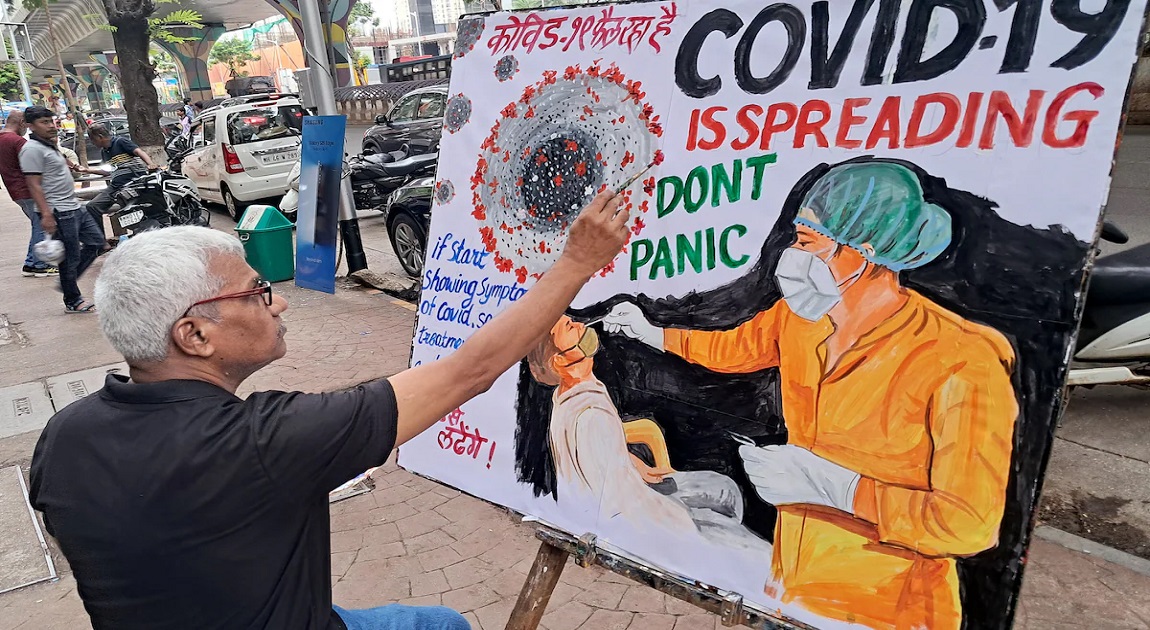India has witnessed a dramatic surge in COVID-19 cases, with active infections increasing by over 1,200% within just one week.
As of June 1, active cases across the country have climbed to 3,395 — a significant rise from 257 cases reported on May 22 and 1,010 on May 26. In the past 24 hours alone, 685 new cases and four deaths have been reported.
The latest outbreak has affected several states, with Kerala, Maharashtra, and Delhi experiencing the highest number of active infections. Kerala, in particular, remains the most impacted state, reporting 189 new cases in a single day and currently holding 1,336 active cases. Other states with notable case counts include Maharashtra (467), Delhi (375), Gujarat (265), Karnataka (234), West Bengal (205), Tamil Nadu (185), and Uttar Pradesh (117). Several other regions like Rajasthan, Puducherry, Haryana, Andhra Pradesh, and Madhya Pradesh are also seeing an upward trend.
Health authorities have identified the primary driver behind this new wave to be a group of Omicron sub-variants.
According to experts from India’s top health research body, recent genome sequencing of samples—especially from southern and western parts of the country—has confirmed the presence of sub-variants such as LF.7, XFG, JN.1, and NB.1.8.1. Among these, LF.7, XFG, and JN.1 are currently the most widespread.
These variants have shown increased transmissibility, but so far, they have not led to a high percentage of severe cases. The rising numbers have followed a pattern: first increasing in southern India, then spreading westward, and now being observed in the northern regions.
All developments are being closely monitored under the Integrated Disease Surveillance Programme (IDSP).
Health officials have explained that whenever a COVID-19 surge occurs, three key factors are analyzed: the rate of transmission, the ability of new variants to bypass previous immunity (whether from natural infection or vaccination), and the severity of illness in infected individuals.
In the current scenario, although case numbers are rising, the pace is not as rapid as seen in earlier waves. Previously, infections could double within two days; this time, the growth rate is slower. There’s also no strong indication that the new variants are significantly evading existing immunity or causing more severe illness in people without underlying health conditions.
The overall severity of the cases remains low, with most infections presenting mild symptoms. Health experts have reassured the public that there is no immediate cause for alarm, but they emphasize the importance of remaining vigilant and prepared.
The healthcare system is actively monitoring the situation and taking necessary precautions to handle any potential escalation.
Globally, some of these variants—particularly LF.7 and NB.1.8.1—have been placed under monitoring.
However, current evidence does not suggest that they cause more severe illness than other circulating variants.
Moreover, existing vaccines are still considered effective in preventing both symptomatic and severe forms of the disease caused by these sub-variants.
While India is experiencing a notable increase in COVID-19 cases, the situation is being carefully managed, and the current wave is largely being driven by new but less severe Omicron sub-variants.









-20250227111445.jpg)




























